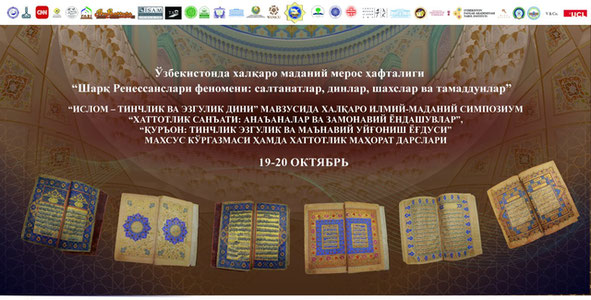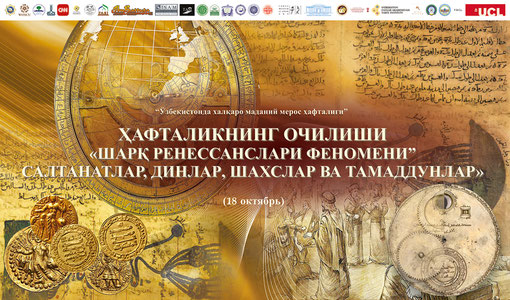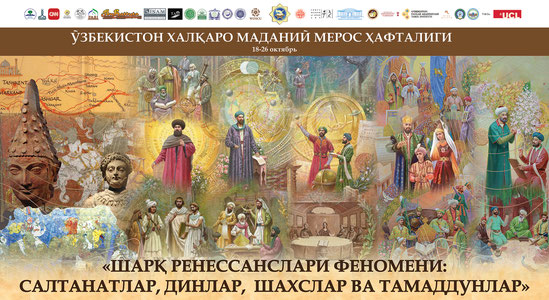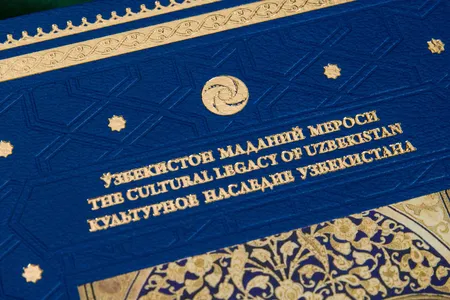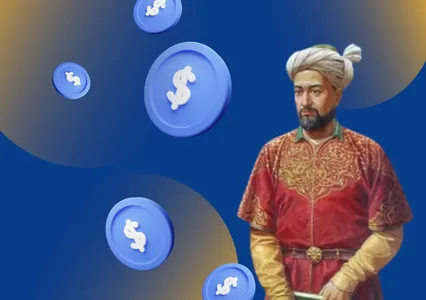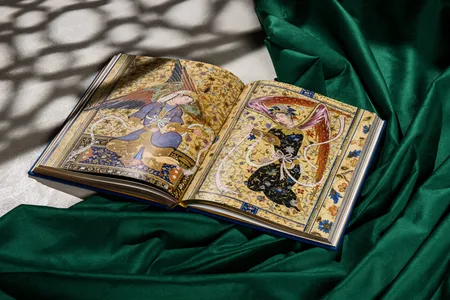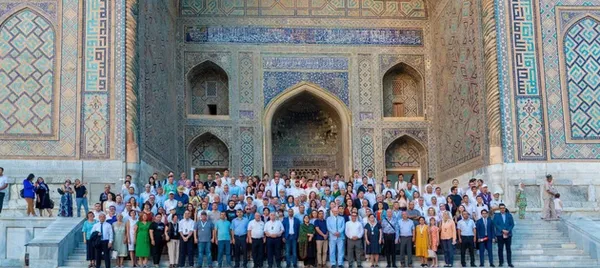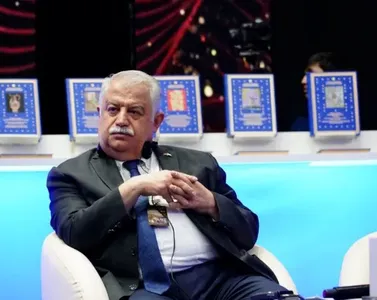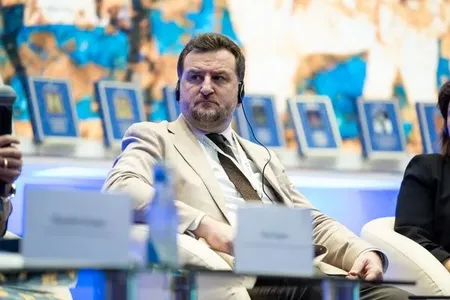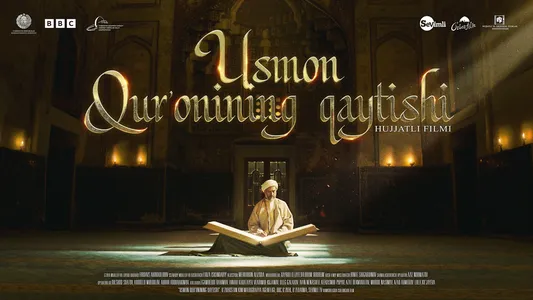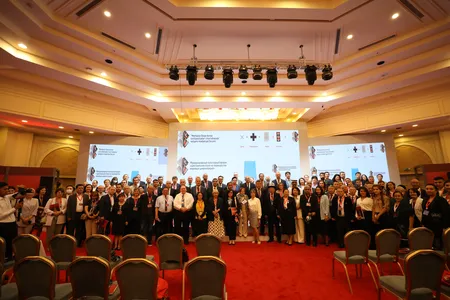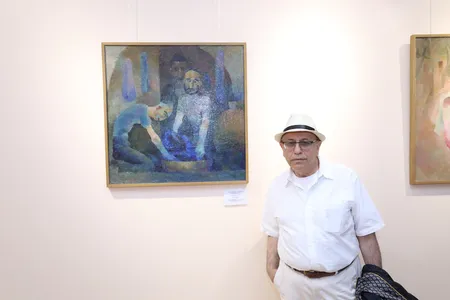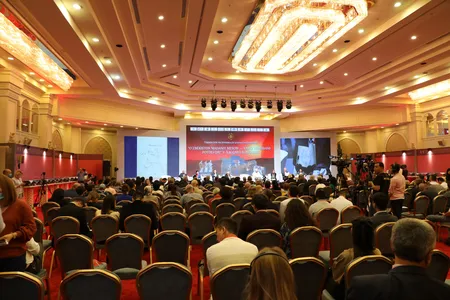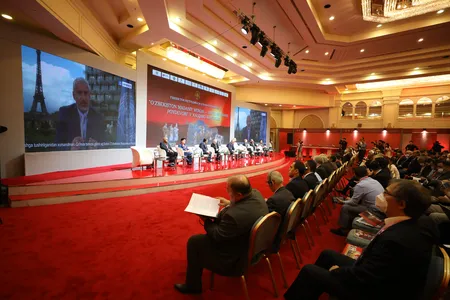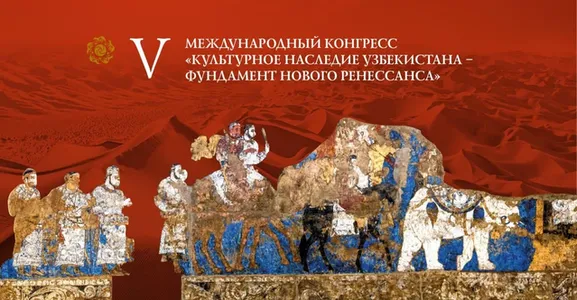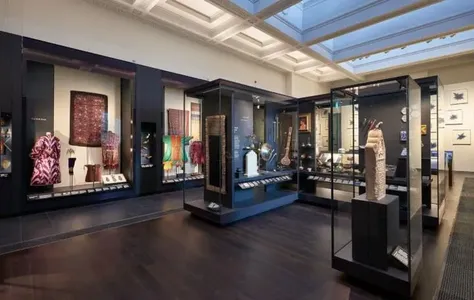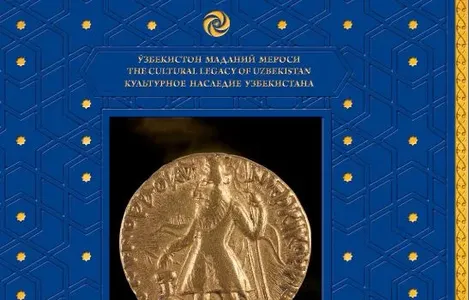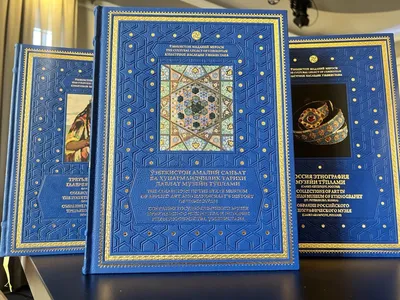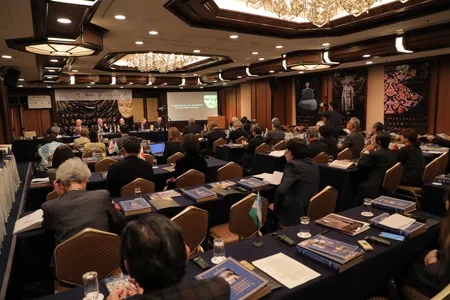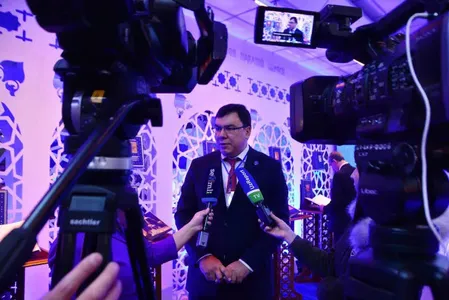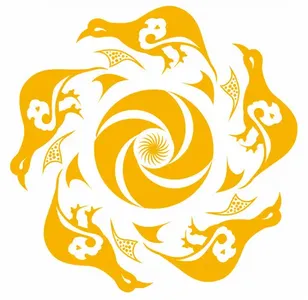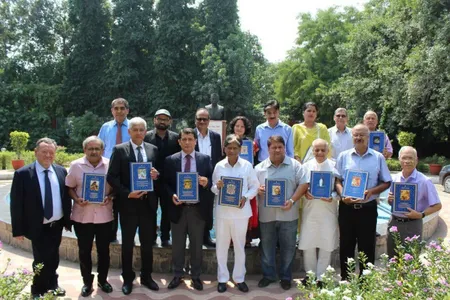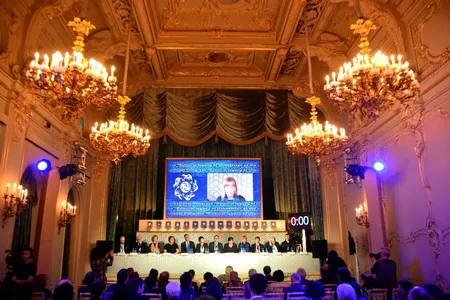The International Congress “The Cultural Legacy of Uzbekistan: the way to the dialogue between peoples and countries” recently took place in St. Petersburg, in which more than 200 specialists studying Central Asia took part.
Daniil Kislov, Director General of the Fergana.ru news agency talked with the head of the project Firdavs Abdukhalikov about the congress, its main task and who finances the activity of popularizing and cataloging the cultural legacy of Uzbekistan.
- Firdavs Fridunovich, we have known each other for 15 years. I was glad to meet you in Tashkent at a conference on Afghanistan. And now it is especially joyful to see you in St. Petersburg at the congress on the cultural legacy of Uzbekistan. Remind me where and when was the first congress?
-Indeed, Daniil, our first meeting took place in the early 2000s in Tashkent, when you were honored as the winner of the First National Internet Festival. As for the First Congress “The Cultural Legacy of Uzbekistan: the way to the dialogue between peoples and countries”, it took place a little more than a year ago, in May 2017 in Tashkent and Samarkand. More than 300 participants from 40 countries came to Uzbekistan at the time. For the first time, museum professionals, representatives of state and public organizations, scientific and expert spheres, socially responsible business enterprises and media structures gathered at one site - all those who are close to the theme of the cultural legacy of Uzbekistan.
- What is the goal of these congresses?
- Uzbekistan is now experiencing an era of rapid changes. The historical process of renewal initiated by the President of our country, Shavkat Mirziyoyev, covered all spheres of life, including science, culture and education. The head of our state adopted a number of decrees designed to fundamentally update the mechanisms of further development of the country's scientific potential, book publishing and researching activities. The most important thing is that the ongoing reforms are aimed at building the rich cultural legacy of Uzbekistan to the rank of country branding - and this is under the personal control of the President.
But it must be understood that these large-scale tasks should be implemented not only by the state, but also by active representatives of civil society. At the same time, these goals cannot be fully achieved without international experience and world support, as well as without the help of socially responsible business enterprises.
And in fact, such congresses make an extensive network uniting scholars, museum professionals, representatives of state and public organizations, and media of different countries that are regularly found at events organized as part of our project.
Another important point is that we create a platform on which interesting issues and topics are raised that affect the development of historical and art history called “the Cultural Legacy of Uzbekistan” in this case. Such events generate new ideas and directions of educational and information activities in the fields of history, culture and art both at the national and international level. Joint work, discussions, meetings on sidelines, presentations of projects in different states encourage participants from various states to discuss urgent problems regarding the development and implementation of new forms of research on the place and significance of the cultural legacy of Uzbekistan in the history of world civilization. In a word, the format of the scientific, cultural and media community was formed.
- What is the essence of this project?
-The Media Project “The Cultural Legacy of Uzbekistan in the World Collections” provides not only the publication of the album books, but also the shooting of films dedicated to objects of material and artistic culture found or created in Uzbekistan and for certain reasons were taken to other countries. These priceless treasures today are the pride of many museums and libraries of the world. It should be noted that according to the recognition of famous foreign scholars, this media project is the first and one of a kind, analogues of which are unknown in the world. The project is kept on three whales: research, preservation and popularization.
The topic of research is a rather urgent problem. I emphasize that many collections of our cultural legacy in museums and collections of the world are not cataloged and not studied. The fact is that, unfortunately, in connection with the lack of experts in our region in some museums, our collections at best are stored in boxes in warehouses and represented as objects from other Oriental countries in the worst. There are many examples of this.
For example, the famous bowl of the legendary Jalaliddin Manguberdy in the British Museum today is territorially attributed to Iran, although even a student knows that Manguberdy was the last Khorezmshah. Published in the early 1990s by the famous Linden Museum in Stuttgart, the Heirs of the Silk Road catalog of the Central Asian collection features many items from Uzbekistan. But today we found that many of them are already presented in museum expositions as originating from the territory of Iran. In the same way, in many world libraries, numerous masterpieces of manuscript art of the Bukhara and Samarkand schools are attributed to Iran today only because they are written in Farsi.
Or there is another vivid example regarding the heritage of the Baburids. Our famous ancestor Babur, leaving Samarkand as he was defeated by Shaybani Khan, took the best examples of the cultural legacy of the Timurids to India in memory of his homeland. It was this cultural legacy that had a decisive influence on the art of the Baburid Empire, and objects of the Timurid era were passed down from generation to generation.
Centuries after the capture of India by Britain, these treasures migrated to the collections of Great Britain. And today, in the overwhelming majority of cases, Uzbekistan is by no means their country of origin.... In this way, in my opinion, the second main idea of the project is to study and publish the cultural legacy of our country, stored in museums and collections of the world.
Popularization is another important task, which is performed not only by filming documentaries and their broadcasting, but also to the placement of the corresponding content in the media. Another format of popularization is the holding of congresses, forums, conferences, and round tables, the distribution of books-albums and films of our project to participants in the events. In a very short period, due to intensive work and conditions created by the state, our project has made a significant contribution to the formation in the global context of the image of Uzbekistan as a country with a rich historical past, experiencing an impressive development of modern approaches to identifying, studying and promoting its spiritual wealth.
- Who finances the project? What is its cost?
- As I have already noted at the beginning of our conversation, scholars, experts and specialists from different countries of the world take part in the work on the collection, study, preservation and popularization of the cultural legacy of Uzbekistan. Media, representatives of state and public organizations, as well as socially responsible business enterprises are involved in this process. Our partners are the Center for Research of the Cultural Values of Uzbekistan under the Cabinet of Ministers of the Republic of Uzbekistan, the Center for Islamic Civilization under the Cabinet of Ministers of the Republic of Uzbekistan, the Ministry of Culture of the Republic of Uzbekistan and others. But this does not mean that they take financial participation in the project. Support in organizational and financial matters is provided by the Eriell Group Oilfield Services Company.
It is impossible to calculate the cost of the project, if only because each of its participants contributes to its implementation. Not only organizations, but also entire countries help us. At the same time, we pay for all expenses, starting from business trips to huge amounts of insurance for the shooting and purchase of rights to publish photos and the video materials we shot. The only country to date that has allowed a photo and video shooting in its museums and also granted the right to publication is Germany. In this regard, I would like to express my special gratitude to the directors of German museums and their scholars, the President of the State of Saxony, Mr. Matthias Ressler, the head of the Konrad Adenauer Foundation in Uzbekistan, Thomas Kunze, and the project coordinator in Germany, Kathleen Goebel..
- How many volumes will be published? How many copies?
- Today we have already prepared 15 albums on the collections of the Russian Federation, Germany and Uzbekistan. In the future, for the next two years, 20 more albums with a circulation of 2.5 thousand copies on museums in France, Great Britain, Japan, the USA, the Czech Republic and other countries.
- Will albums be available to the general public, including in Uzbekistan
- They are already available to researchers and visitors to world libraries. The fact is that the thousandth circulation of 10 volumes presented at previous events was directed exclusively for free presentation distribution, including in libraries and museums of both Uzbekistan and foreign countries. For two years, more than 500 sets were transferred to world libraries and museums as a gift (this is more than 5 000 books). They were sent directly to the Uzbek museums and libraries, as well as abroad through the embassies. Just at the March media forum in Tashkent, 52 sets were donated, and this is 520 books. Another part of the books was sent free of charge to people interested in their receiving and study. This is due to the fact that the project is non-profit and did not initially provide for the sale of our books and films.
However, in connection with requests for the wider granting of books, an additional edition was printed. Another and perhaps no less important reason for this solution is to make money for the implementation of the following stages of the project and printing new books. Indeed, for our project, there is no state funding, and expenses are constantly growing. Currently, the marketing and sales department has not yet been organized, but the additional edition has already arrived in Tashkent, and now we are determining their price.
- How is work organized in foreign museums? Which of the major experts do you invite? How are they selected?
- Usually, specialists from foreign museums or libraries - potential authors of our books-albums - are recommended by the directorate of museums. Often these are first-class specialists who are well versed in the topic and information about the collections they hold. We also invite specific specialists ourselves, using the large database of scholars and experts prepared during the activities of the project. However, it also happens that museums turn to us with a request to send scholars from Uzbekistan to their collections for the correct identification of objects, manuscripts and archaeological artifacts. This is what we do.
So it was with the Institute of Oriental Manuscripts of the Russian Academy of Sciences in St. Petersburg, the Glinka Museum of Musical Culture and others. The project has repeatedly sent domestic specialists to study entire collections, their relationship to Uzbekistan. And they became co-authors of albums, along with museum specialists.
I would like to note that to break into foreign museums, even for negotiations, is not so simple, their work plans are fixed for years to come. This happened, for example, with the Stuttgart Museum, which I mentioned above. From the moment of our first appeal to this day, when we managed to get only one article about the Museum of Stuttgart for the album about the collections of Germany, three years have passed. Establishing a connection, establishing personal contacts, determining the authors of articles, and waiting their turn in the strict plans of the work of museums are not an easy matter. This is followed by the most expensive part such as the conclusion of contracts with the authors of articles and museums for the right to publish the collection, with photographers for the shooting of exhibits and with the administration for the right to video filming. By the way, one hour of shooting in the British Museum cost us hundreds of pounds.
- How is art selected for inclusion in illustrated albums? For example, in the book about the Nukus Museum named after Savitsky known for its collection of avant-garde of the first half of the 20th century, there is little avant-garde as such - only three works by Usto Mumin ... Why?
- The number of books in the series dedicated to Uzbekistan is only two. One is dedicated to the collections of the State Museum named after Igor Savitsky, the second to the State Museum of Arts of Uzbekistan, the “pilot” of which we present at the Congress in St. Petersburg. The project is developing, and soon another illustrated volume on the collection of the Samarkand Museum will be prepared. There are subtleties here, if in the collection of, for example, the Indian National Museum, the collection of Uzbekistan is kept in two or three departments, then national museums represent our heritage in full - on the scale of huge storage facilities. And it is simply not possible to publish the entire collection of the museum in one volume. Along with this, it should be noted that we do not pursue the goal of immediately publishing everything to a single cultural legacy kept in a particular museum. In subsequent illustrated volumes, other collections of museums in Uzbekistan will be more widely represented.
- How do you identify the “Uzbek” art and the “not Uzbek”? For example, many artifacts could just as well be attributed to the "legacy of the Tajik people."
- The work on identifying and attributes of artifacts is carried out under separate agreements by museums themselves and their scholars. Leading researchers and experts are also involved in it. It is they who identify the territorial origin of objects of cultural legacy.
At the same time, we perfectly understand that there are controversial questions in this field of our work. In such cases, the territorial origin of artifacts is attributed by the names of states and historical territories of that time.
- What is the scientific value of albums?
- Initially, the project was conceived in two formats - scientific and popular. In other words, books should not only reflect the scientific side of the issue, but also popularize the cultural legacy of Uzbekistan both in our country and abroad. As for the scientific value, I say the following: this is the first project that is built on the methodology and principles developed by both domestic and foreign science. In a broad sense of the issue, cataloging and research of such a huge number of objects of the cultural and historical heritage of Uzbekistan has never been carried out before. Another principle is a systematic approach to the publication of scientific data; a huge amount of reliable, factually verified material is published in volumes. Many collections are published for the first time, which means that they can become an excellent source of further research for many scholars from different countries.
- A disk is attached to each album. However, today, fewer people use them, and museum information is considered a good tone to digitize and download in open access on the Internet. Do you intend to publish this on the network?
- On the discs attached to the albums, films in three languages made by the crew of the project are presented. And all of them are presented in the public domain on the Internet and on the official website of the project. As for the albums and scientific articles, this, of course, is an excellent means of widely popularizing the scientific material of high value.
- How many more congresses will be held when the entire project program will end?
- At the First Congress, a resolution was adopted in Registan Square, in which scholars came up with the initiative to establish the World Society for the Study, Preservation and Popularization of the Cultural Legacy of Uzbekistan. This initiative is planned to be implemented at the current congress. Further holding of congresses and other scientific forums and formats will depend on the decision of the World Society, which tasks are to further implement the project on a systematic basis.
http://uzbekistan-geneva.ch/zachem-uzbekistan-razyskivaet-svoe-kul-turnoe-nasledie-po-muzeyam.html

